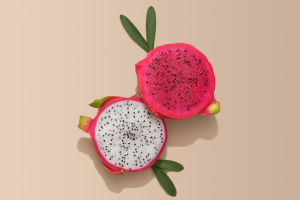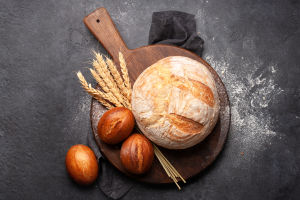Hey Lykkers, ever wondered what sets sweet cherries apart from sour ones?
Whether you're picking them fresh or adding them to your favorite dishes, knowing the different varieties and their best uses can make all the difference.
Let's dive into the world of cherries and discover what makes each type unique!
Sweet Cherries: The Fruit Lover's Dream
Sweet cherries are the most popular type you'll find in supermarkets. They're larger, juicier, and have a rich, satisfying flavor that's perfect for snacking. Some common sweet cherry varieties include:
Bing Cherries: These are the classic sweet cherries you probably imagine—dark red, almost black in color, and incredibly juicy. They're perfect for eating fresh, in fruit salads, or as a dessert topping.
Rainier Cherries: With their beautiful yellow-red skin and honey-like sweetness, Rainier cherries are a summer delicacy. They're best enjoyed fresh because of their delicate flavor and high sugar content.
Chelan Cherries: Often ready for harvest earlier in the season, Chelan cherries have a mild sweetness and firm texture, making them great for eating on the go.
Best Uses for Sweet Cherries: Sweet cherries are ideal for fresh consumption, fruit salads, or as a garnish for ice creams and desserts. Their natural sweetness makes them less suited for baking, as they can become too soft and lose flavor when cooked.
How to tell the difference between sweet and sour cherries
Video by Highland Orchards Farm Market
Sour Cherries: The Baker's Best Friend
Sour cherries, also known as tart cherries, are smaller, brighter, and packed with a punch of acidity. While not the best for snacking, their intense flavor makes them the go-to choice for cooking and baking. Some popular sour varieties include:
Montmorency Cherries: These are the most widely grown sour cherries in North America. They're bright red and have a tangy flavor that's perfect for making pies, jams, and preserves.
Morello Cherries: Slightly darker and less acidic than Montmorency, Morello cherries are fantastic in baked goods, especially when mixed with chocolate for a rich, contrasting flavor.
Balaton Cherries: Originally from Hungary, Balaton cherries are known for their deep color and sweet-tart taste. They're often used in European desserts, making them perfect for cherry strudels and sauces.
Best Uses for Sour Cherries: Sour cherries shine in pies, tarts, and sauces due to their high acidity, which balances out the sweetness of baked goods. They also make excellent jams and preserves because their tartness helps retain a robust flavor even after cooking.
The Sweet vs. Sour Debate: Which to Choose?
Choosing between sweet and sour cherries depends on how you plan to use them. If you're looking for a snack or something to enjoy, fresh, sweet cherries like Bing or Rainier are your best bet. Their natural sweetness and firm texture make them the perfect addition to a summer picnic or fruit platter.
On the other hand, if you're baking a pie or making a sauce, sour cherries are the way to go. Their bright, tart flavor stands out even after baking, and they add a pleasant kick to desserts that you won't get with sweet varieties.
Fun Facts About Cherries
Cherries are packed with antioxidants: Both sweet and sour cherries are rich in vitamins and antioxidants, which can help reduce inflammation and promote heart health.
They can help you sleep better: Sour cherries, in particular, contain melatonin, a hormone that regulates sleep. A glass of tart cherry juice can be a natural remedy for insomnia.
Cherries have a long shelf life: Sweet cherries can be refrigerated for up to 10 days, while sour cherries can be frozen or preserved for longer-lasting enjoyment.
How to Pick the Perfect Cherry
When shopping for cherries, look for firm, plump fruits with bright, glossy skin. Avoid cherries that are soft, shriveled, or have blemishes. For sweet varieties, the darker the color, the sweeter they'll be. Sour cherries should have a vibrant red hue and feel slightly softer than sweet cherries.
So, Lykkers, next time you're in the mood for cherries, remember that sweet cherries are best for snacking, while sour ones are perfect for baking. Knowing the difference between the two will make your cherry-picking experience that much sweeter—or tarter!


